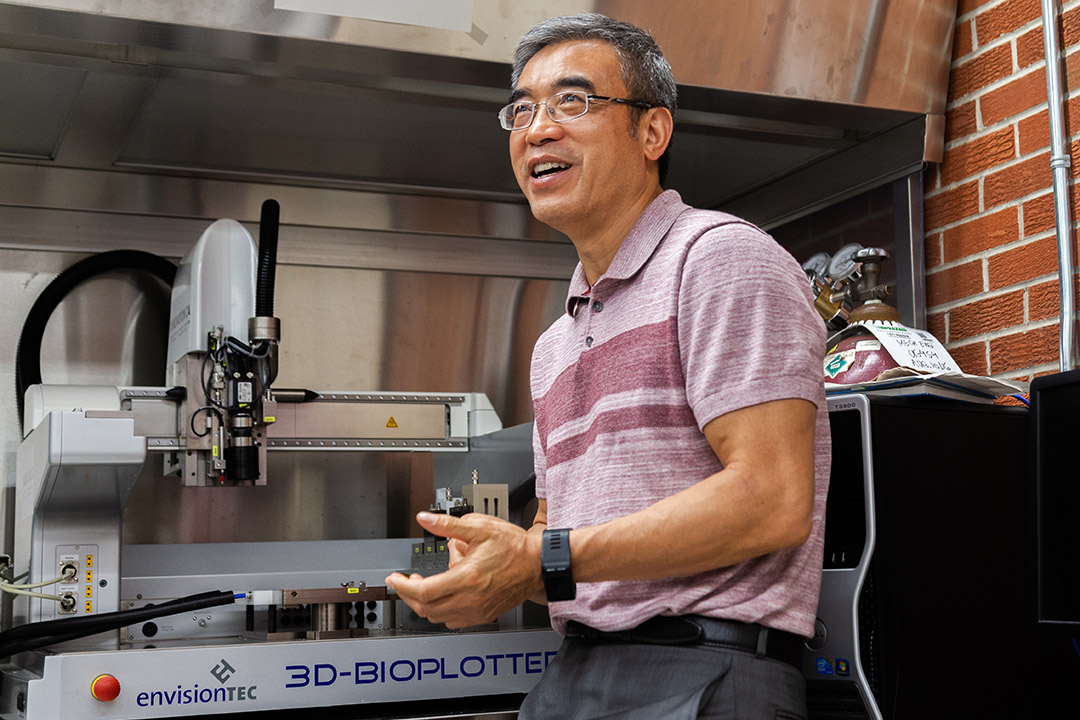
People of the Plan: Trailblazer in tissue engineering
Mechanical engineering professor Dr. Daniel Chen (PhD) is working with an interdisciplinary USask research team from across campus to combine engineering and health sciences in the emerging field of tissue engineering.
By James ShewagaChen, who began his teaching and research career in the College of Engineering in 2003 a year after completing his PhD at USask, leads a team that is exploring ways to repair or heal damage to tissue and organs in the human body, such as hearts, cartilage, teeth, bones, and nerves. Chen’s research team employs three-dimensional (3D) bioprinting technologies and the world-class imaging of Canada’s only synchrotron at the Canadian Light Source facility on campus to research the bioengineering of artificial tissue/organ structures, using a scaffold template to promote regeneration.
“My research is primarily in the area of tissue engineering, which is actually to use engineering methods to create 3D constructs that are called scaffolds, to repair damaged tissues and organs,” said Chen. “Due to the interdisciplinary nature of tissue engineering, I formed the Tissue Engineering Research Group, which includes researchers from across this university, from the College of Medicine, College of Veterinary Medicine, the Canadian Light Source, and the College of Engineering.”
Chen said USask is perfectly positioned to conduct this type of leading-edge research, combining one-of-a-kind facilities like the Canadian Light Source with the university’s proven track record of success in interdisciplinary collaborative research endeavours.
“At the very beginning, I collaborated with a professor in the College of Medicine on peripheral nerve repairs and then we expanded it to spinal cord repair and later on we have worked with other researchers who are interested in cartilage and teeth repair as well as myocardial infarction (heart attack) and the treatment of stroke,” said Chen. “So, we have expanded this research, little by little, based upon the expertise and strengths of this university.”
Chen’s team is at the forefront of this fascinating field of research, focused on improving quality of life by artificially restoring tissue and organ function. If the team’s pilot project proves promising with animal subjects as the next step, Chen hopes to replicate the success with human patients one day.
“In the future, we hope that when tissue or organ damage unfortunately happens, we have the way to create the artificial construct to replace or repair the damaged tissue and organs.”
The University the World Needs
People of the plan
The University of Saskatchewan’s new seven-year plan through to 2025 is titled The University the World Needs and has been gifted the Indigenous names nīkānītān manācihitowinihk (Cree) and ni manachīhitoonaan (Michif), which translate to “Let us lead with respect.” In each issue of On Campus News in 2019, we will take a look at the 12 major goals of the new plan by profiling individuals involved in the university’s commitment to Courageous Curiosity, Boundless Collaboration and Inspired Communities.

